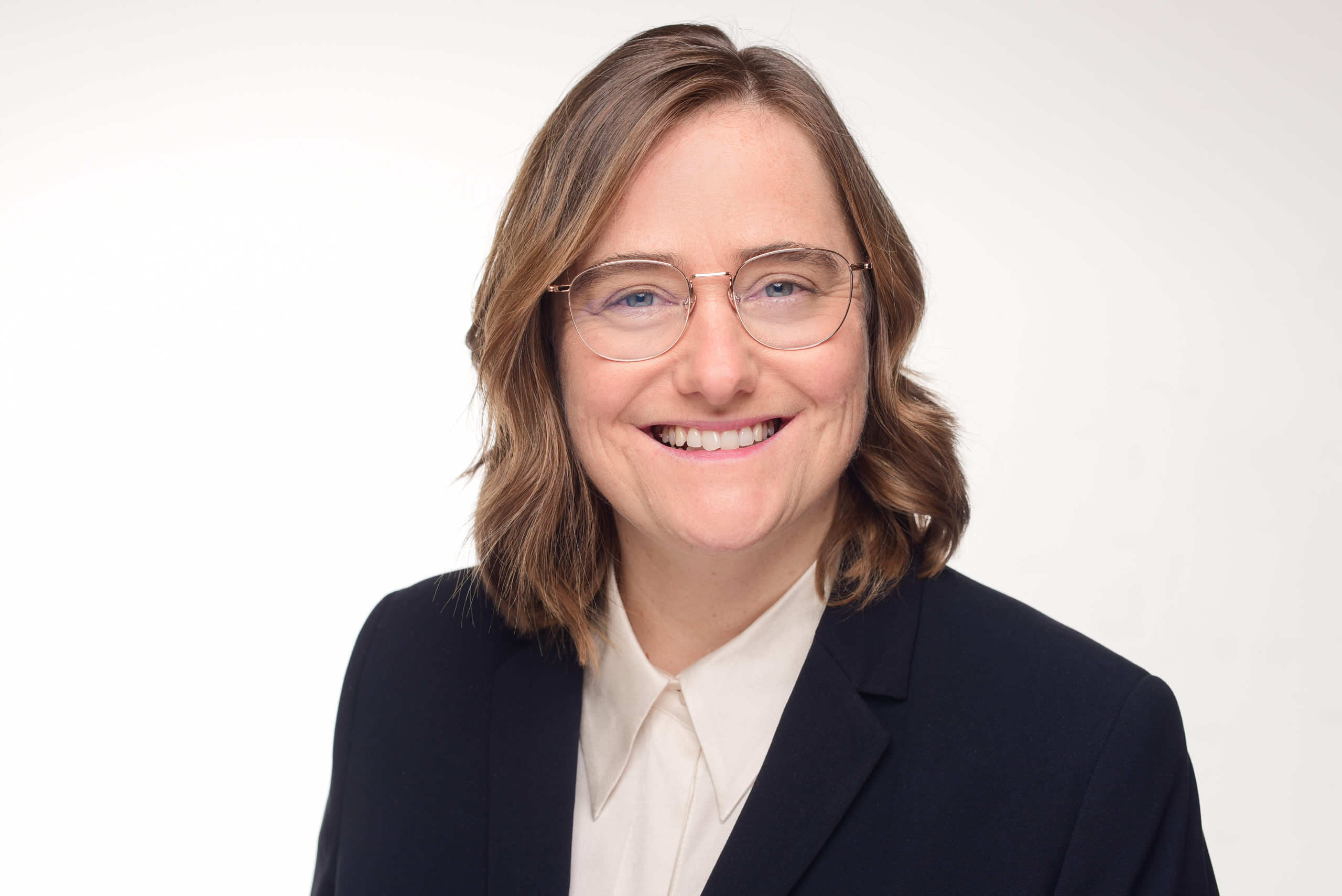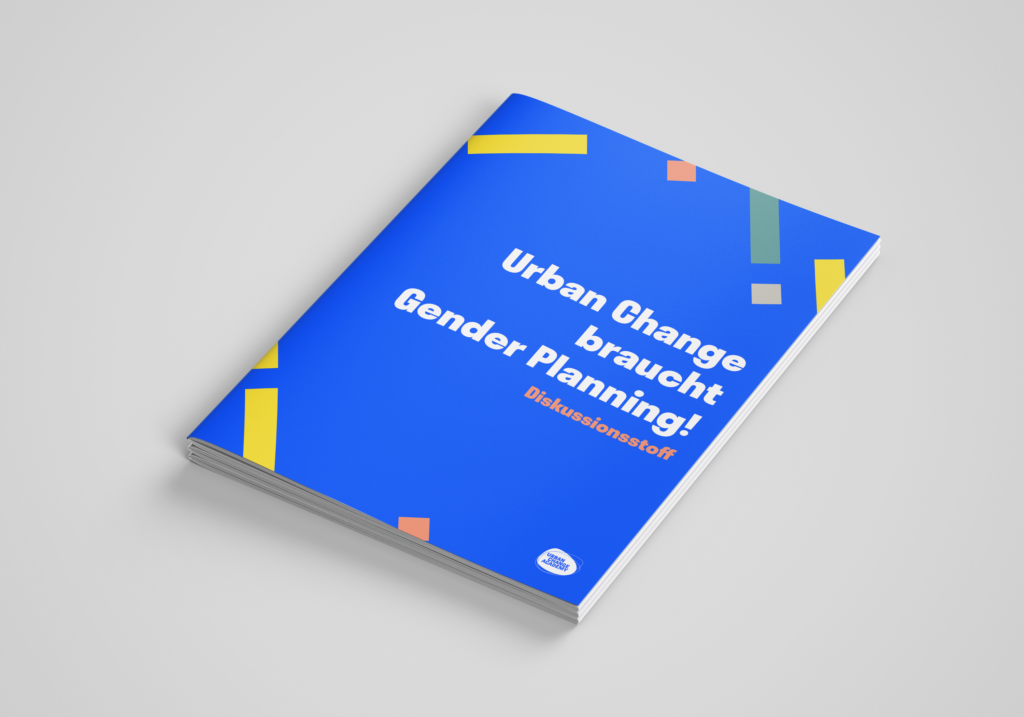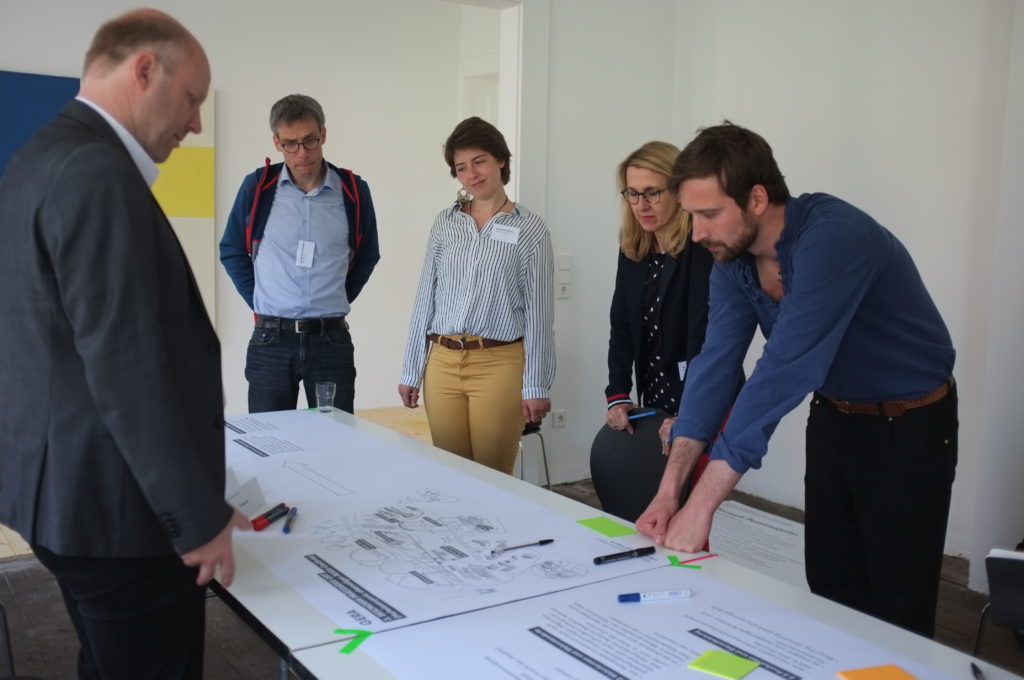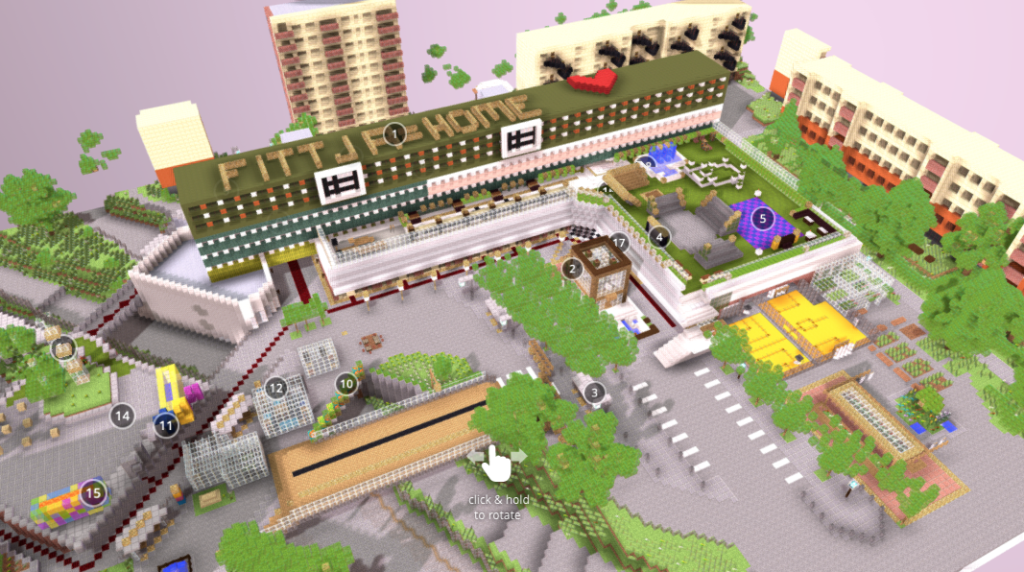Urban Change Academy: How have you personally experienced the Covid pandemic?
Kirsten Pfaue: I find the pandemic an unbelievable challenge, especially for all organisational processes. My job as coordinator for the mobility revolution in Hamburg is primarily to bring people together. This includes solving emerging and existing conflicts, developing ideas, and inspiring people for new projects. The mix of working from home and all the personal crises associated with the pandemic definitely makes my work more challenging.
How are the pandemic and the transport revolution connected?
I perceive the current developments as very contradictory. Continuing to work constructively with a large number of stakeholders under pandemic conditions means it’s a great effort for all of us. Nevertheless, 2020 was very successful from a professional point of view, because cycling can be called the absolute winner of this crisis so far. We have 33 per cent more cyclists on the roads in Hamburg than in the past few years and there are junctions where we can no longer handle the cycling traffic safely because it has grown so much. We also set a new record in 2020: We built 62 kilometres of new cycle lanes – that’s huge.
What does that mean for mobility in the city as a whole?
For many people, cycling opens up a whole new way to move around, to get in touch with others and to experience the city from a new perspective, especially to break out of the monotonous working from home routine. Of course, foot traffic is also increasing, while car traffic has decreased due to everyone working from home. Unfortunately, public transport is one of the losers in this situation, and it will be a great challenge for the cities in the coming years to pick up the slack. I believe that a major social task will be to restore confidence in the safe use of public transport. But we will succeed. I am confident that we will, with good hygiene concepts and new ticketing systems. I also believe that cities will continue to grow, but space will remain scarce.
What has been the most surprising realisation for you in the past few months around the pandemic and the developments related to it?
It was amazing to see that you can cycle very well in Hamburg when there are fewer cars on the road. And how many people suddenly enjoyed cycling and felt safer because of this. Many people seem to have rediscovered Hamburg for themselves by bike.
What observations have you made about city life in Hamburg in recent months?
It was amazing to see people reclaiming and enjoying public space in the summer of 2020. A good example of this is the Krugkoppel Bridge, which was being rebuilt at that time. So, there was no car traffic on the bridge and it became a lively meeting place every evening. All kinds of people met there casually, spent time together, had a drink. They experienced their city in a completely different way from before. I have never experienced such liveliness in this place. Before the building activity, cars drove there on four lanes – in this beautiful place, it’s unbelievable. You forget that so quickly. This need for social exchange in public space has become very strong during the pandemic. That’s why, in my view, cultural offerings in the inner city will continue to be so important in the future so that there is a reason to stay there. For that, we need attractive places to stay.
How has your image of the city centre changed both before and during the pandemic?
Before the pandemic, I associated Hamburg’s city centre mainly with shopping, multi-storey car parks and cars on the Jungfernstieg. I assume that after the pandemic we will rethink the city centre in many areas. Namely as a meeting place with a strong amenity value , with culture, with changing offers and also a newly designed form of retail. I also believe that during the pandemic people have recognised the importance and value of a small, regional village centre in their neighbourhood. And they’ve realised that there is value in not hearing car noise, in making the city quieter, in improving the air and in creating more space for people to meet – these are the basic values that will shape the inner cities and regional centres after the pandemic.
The topic of car-free city centres is still considered to be very controversial. How do you think climate change mitigation measures will develop in Hamburg in this regard? And how will you deal with it?
In the short term, there will certainly be controversial discussions, especially in the inner city, because professional and economic livelihoods are at stake and there needs to be willingness by the individual players to change. Opposing interests arise very quickly here. On the one hand, retail and catering will be concerned with their survival and thus quickly become concerned with maintaining the known status quo. On the other hand, all stakeholders are aware that it will be very difficult to survive without change. We need visions. And not everything is clear. What will happen on Hamburg’s streets in the coming months if we no longer have to work from home, but public transport has not yet regained the trust of the population? It seems to me that major conflicts on the road between car drivers and cyclists are preprogrammed. It is then important not to lose sight of the vision of the mobility revolution and to do everything in our power to ensure that public transport gets going again and that the expansion of the cycling infrastructure makes rapid progress.
The issue of quality of life in the city seems to be important. In the summer we saw that restaurants were allowed to use more outdoor space, and in Hamburg’s Planten un Blomen park there was a temporary roller skate rental service. You see a lot of exciting initiatives that make places in the city even more attractive than before – and increase the quality of life despite the crisis. How can you ensure that such projects will survive the pandemic?
I think we have to take a broader view. We won’t all go back to the office five days a week after the pandemic. I am convinced of that. The work situation will change a lot for people who have been in the office every day up to now. This also means that people who spend a lot of time at home will want to get out into the city from time to time. I believe that people will long to go back to the city centre, to spend time there, to use seating areas, to go for a stroll. And that’s exactly what the measures have to be geared towards. Above all, it is important to make new offers possible and to make them tangible. We must not just talk about making the city centre attractive but also make this experience visible and implement it within a relatively short period of time.
Does that mean that the time for change is now?
Yes, exactly. I think the opportunity that lies in the pandemic is that people have experienced the benefits of less car traffic. We’ve seen the qualities that places like the Krugkoppel Bridge can develop. What a city with less traffic is like – the air is so much better. The understanding of why, for example, sufficiently wide cycling lanes are needed now more than ever. Many more people, including inexperienced cyclists, suddenly find themselves at road junctions and want to navigate safely through the city. The deficits are becoming clear, and it is now possible to build on them and make improvements.
What could that look like in concrete terms?
Last year, we conducted a traffic survey in Hamburg’s city hall district in which individual streets were closed. This was received very positively by the majority. The neighbourhood became more attractive because, among other things, the restaurateurs were allowed to put their tables on the street and people enjoyed spending their lunch break there. I think this approach will become even more entrenched. Sometimes I wish we had more courage to simply try something out or to keep the bureaucratic obstacles as low as possible in order to allow more creativity. But with these traffic experiments, which are now also provided for in the Road Traffic Regulations (StVO), we have and improved framework for this – to just do it. Unfortunately, we tend to discuss all problems first until the desire and courage have gone. We can do better than that.
How do you think the role of citizens will change in the post-Covid city?
I can well imagine that many citizens are angry at “those up there” and are angry with the state. And this indefinable anger at the decision-makers, at politics in general, I think, is very dangerous. I have the impression that the restrictions associated with the pandemic have strengthened or triggered this feeling in some people. After the pandemic, it is important that we as a society agree on common values and norms in order to be able to tackle the big issues, such as climate change and the mobility revolution. Otherwise, conflicts could arise by proxy. Then there is the angry car driver who is hopping mad with the cyclist, but not really with the cyclist at all because there is something else going on under the surface. And I think that’s dangerous.
What effect will the pandemic have on our view of the future?
I believe that the pandemic makes it very difficult to develop and find a common vision in a creative way. By the way, I notice this in my work, too, which is why I talk to people about visions and impulses that move us forward. At the moment, we all simply have to persist, and somehow get through, from day to day. The length of the pandemic will certainly have an influence on when we start again. Certainly, the city and the people must first come to terms with the pandemic before we can look too far ahead together. But as long as anger is still fermenting about civil rights being so severely restricted, and many entrepreneurs are still fearing for their existence, people will be less willing to discuss visions for new forms of mobility.
Looking back at the past few months: Which of your skills have helped you most in your work to deal with all these changes?
Listening. Listening and letting statements sink in. I think it’s important to remember that everyone has their own view of the pandemic. And only by listening and changing perspectives can a basis for a common discussion and a common picture be created. One should also free oneself from the idea that one’s own view is the measure of all things. At the moment everyone has their own, different view of their own situation and also evaluates it differently.
If we take your personal skills as a starting point, what skills or ways of working do you think institutions, cities and authorities will need in the future?
There needs to be a dialogue between the city and the people about what has happened and how we want to shape our common future. To strengthen our democratic forces, this can only happen through discourse. We need to interact with citizens as much as possible. Communication and discourse are, in my view, central to the post-pandemic period. However you organise it, it costs money. It costs resources, it costs nerves. But I am convinced that it is worth it, and I am confident that we will succeed.
Thank you very much.




